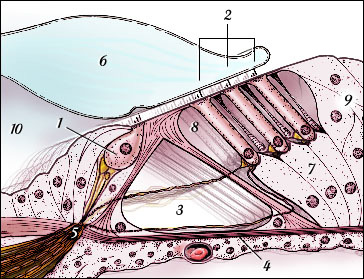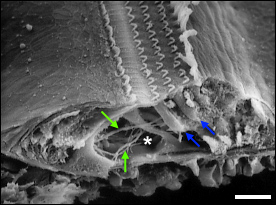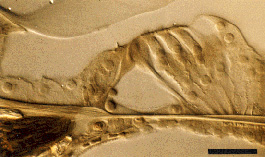| |
|
| Overview / Function / Development | |
| Drawings: S. Blatrix; Pictures: M. Lenoir, R. Pujol | |
| The organ of Corti is named after one of the first anatomists to give a detailed description (ref. a11) of the neuro-sensory cochlea. Seated on the basilar membrane, it is composed of the sensory cells, called hair cells, the neurons, and several types of support cells. |
|
|
||||||

|
For
permission to non-commercial use of any element of this site, please contact us All rights reserved © 1999 - 2007 The authors Intellectual property law 85-660 (07/03/1985) |
|



